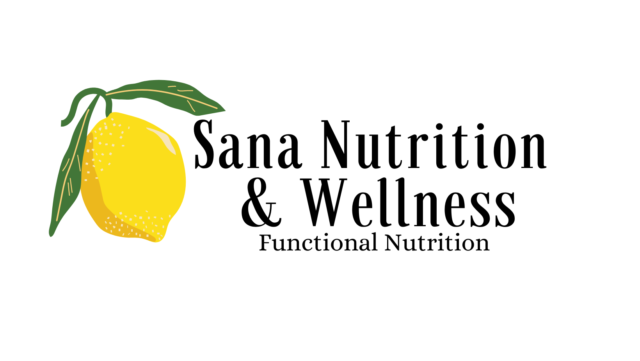There is a lot of confusion about soy and it effects on health…in fact it is one of the most frequent questions I get. So today we are going to shed some light on the matter:
Soy is a high-quality source of protein and can serve as a replacement or in addition to meat/poultry/ dairy based protein sources.Soy is considered a complete protein, which means it have all the essential amino acids we need to build muscle and support our metabolism. Soy is also a good source of fiber, calcium, iron, and healthy fats! Sources of soy-based foods include soy milk, tofu, soybeans, tempeh, edamame, and soy nuts.
Despite being a nutritionally dense food, there has been some negative information about soy floating around which has sparked some controversy. So let’s dig into those myths a little more.
Soy Myth-buster
- Myth: Its estrogen – Truth: Soy contains phytoestrogens which operate in a slightly similar way to the female hormone estrogen. Post-menopausal women (who produce less estrogen) have been able to address the symptoms of menopause by adding more soy to their diet.
- Myth: It makes men have boobs – Truth: Soy does not decrease men’s testosterone levels. There is no strong evidence that soy has any sort of meaningful effect on men’s hormone levels. So don’t worry gentlemen, soy is not harmful to you.
- Myth: It causes Prostate Cancer. Truth: Prostate cancer is the most commonly diagnosed cancer in the male population and consumption of soy-based foods is associated with a reduced risk of prostate cancer.
- Myth: It causes Breast Cancer: Soy has a protective (or neutral) effect on breast cancer risk. Some breast cancer grows in the presence of estrogen, and yes, I just said soy has a form of estrogen. However, there is no direct link stating that soy causes cancer. The following studies may give you a peace of mind.
- In Asian countries, soy intake was protective against breast cancer – lowering the risk of breast cancer for both pre- and post-menopausal women. However, the same result was not found in Western countries. There was no evidence to suggest an association between soy intake and breast cancer in pre- and post-menopausal women.
- Soy consumption does not have estrogenic effects. Higher soy intake similar to a traditional Japanese diet may be defensive against breast cancer incidence, recurrence, and mortality.
- Eighteen studies concluded that the consumption of soy may be associated with a small reduction in breast cancer.
Soooooo, studies have yet to find any strong research that supports soy’s bad rep. When looking at evidence of soy’s impact on human health, we have seen positive or neutral results.
Soy, what exactly are you saying?
Although further research on soy is needed, the majority of current studies show that eating soy in moderate amounts is safe and can even be beneficial for most people. Overall, I recognize that soy products like tofu, are great plant-based proteins. Studies have shown that increasing plant-based proteins while simultaneously decreasing animal proteins can improve your health long-term and decrease your risk for colon cancer. Also, if soy just isn’t your jam, then there are other plant-based protein options such as hemp protein.
If you are still skeptical about consuming soy products, I highly encourage you to do your own investigative research. Beware that a single claim or study is not the tell all, be all. One study can also be misrepresentative of the overall data.
If you’re looking to incorporate soy into your diet, then try out our tasty edamame recipe below ????

Refreshing Edamame Dip
- 12-ounce bag frozen shelled edamame
- ½ cucumber, finely diced
- 3 tablespoons extra virgin olive oil
- ¼ cup chopped cilantro
- ¼ cup red, orange, and yellow bell pepper, diced
- ½ teaspoon salt
- ¼ teaspoon freshly ground
- Handful of crackers or carrots for dipping, optional (photographed: Trader Joe’s Fig & Olive Crisps)
- Defrost the edamame. Place in microwave for 2:30 minutes if necessary. Allow to cool if warm.
- Place edamame in a food processor; process until coarsely chopped. Place chopped edamame in bowl.
- Combine the chopped edamame with the finely diced cucumber, three tablespoons of olive oil, chopped cilantro, diced bell pepper, salt, and pepper. Mix ingredients.
- Can be enjoyed as a dip or a side!
References
- Messina M. Soy foods, isoflavones, and the health of postmenopausal women. Am J Clin Nutr. 2014; 100 (1): 423S – 30S.
- Van Die MD, Bone KM, Williams SG, Pirotta MV. Soy and soy isoflavones in prostate cancer: a systemic review and meta-analysis of randomized controlled trials. BJU Int. 2014; 113: 119 – 30.
- Chen M, Rao Y, Zheng Y, Wei S, Li Y, et al. Association between soy isoflavone intake and breast cancer risk for pre- and post-menopausal women: a meta-analysis of epidemiological studies. PLoS ONE. 2014; 9(2): e89288.
- Fritz H, Seely D, Flower D, Skidmore B, Fernandes R, Vadeboncoeur S, et al. Soy, red clover, and isoflavones and breast cancer: a systematic review. PLoS ONE. 2013; 8(11): e81968.
- Trock BJ, Hilakivi-Clarke L, Clarke R. Meta-analysis of soy intake and breast cancer risk. JNCI. 2006; 98(7): 459 – 71.
Adapted from the original post over at drivenperformance.net





